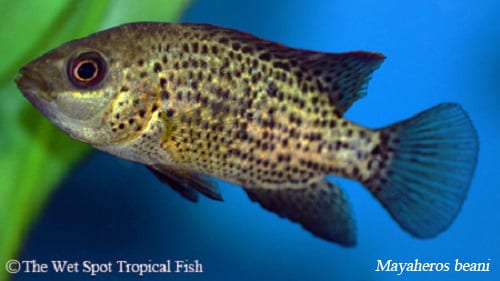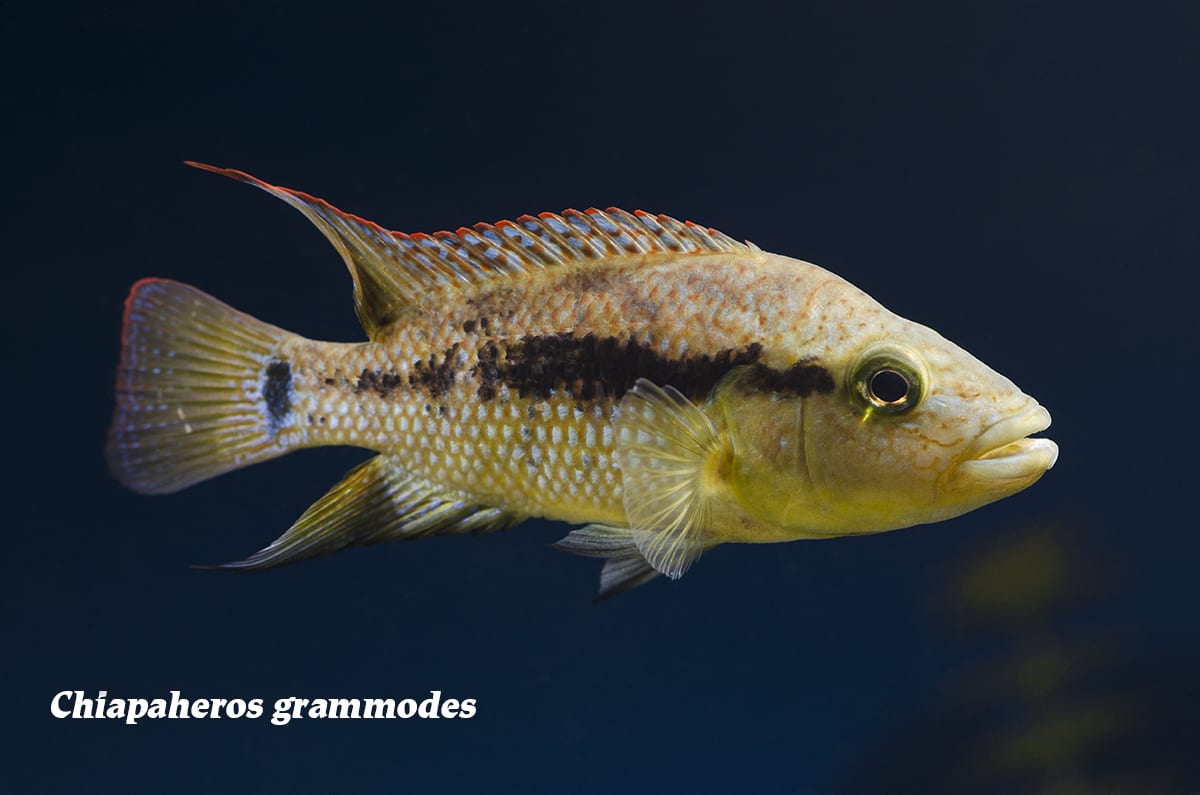Feliz Cinco de Mayo!
Feliz Cinco de Mayo!
Bienvenidos a Mayo, aquarists! Contrary to popular belief, this weekend’s anticipated holiday, Cinco de Mayo, does not celebrate Mexican Independence day. Rather, the date marks the victory of the Mexican army against French occupation at the Battle of Puebla, which holds very little significance to Mexican citizens. Oddly enough, it means so much more in The States, and has grown to become a celebration of the integration of Mexican culture into America. Without the food, art, and music brought from our neighbors to the south, we can all agree that life would be quite a bit duller. Along the same vein, Mexican fish are beautiful and vibrant choices to enrich our aquaria. A few of our favorites: Herichthys bartoni, Mayaheros beani, and Chiapaheros grammodes.
Scientific NameHerichthys bartoni
Common NameNone
Temperature / pH78 to 82°F / 7.0 to 8.5 pH
Native LocationMexico
Preferred DietInvertebrates, zooplankton
Found in streams, pools, and drainage channels of the Panuco River of Mexico, H. bartoni is reminiscent of another Mexican holiday: day of the dead. Fleetingly known as Nosferatu bartoni for their curved fangs in their upper jaw, they also turn jet black on their undersides, and bright white on their backs and heads during spawning, which is quite a sight! Reaching 7 inches in length, they normally exhibit light colored bodies speckled in black with faint red coloration on their pointed faces. Preferring river and lagoon habitats, they do best in tanks with dense vegetation, driftwood, rocks, and any furniture that provides shady corners and areas to retreat to. A bit tricky to keep in community tanks, they are mildly aggressive to other species, and very aggressive to conspecifics during spawning. They are best maintained in Central American tanks alone, or in single pairs. In tanks over 50 gallons they seem to do well alongside similarly-sized cichlids with different markings and coloration, and large catfish. Omnivorous by nature, they will eat small fish, invertebrates, and algae in the wild. In captivity, make sure they are fed well-rounded diets with frequent live and frozen offerings, and some vegetal component. Tank waters are best maintained with temperatures between 78 and 82°F and pH of 7.0 to 8.5.
Scientific NameMayaheros beani
Common NameGreen Guapote Cichlid
Temperature / pH73 to 77°F / 7.5 to 8.5 pH
Native LocationMexico
Preferred DietInvertebrates, Zooplankton
| Native to the Pacific slope of Mexico, Mayaheros beani is truly a Mayan hero comparable to the noble luchadores with the stage name “Green Guapote”. Reaching nearly 12 inches in length, at maturity these cichlids have dark scales lined in light green, faint banding, and light faces. Found in both freshwater and brackish environments, they have a preference for lower river valley habitats with moderate to strong flow. In captivity they do best in tanks that simulate rivers with water-worn rocks and other submerged structures where they can hide through the night. Extremely aggressive to conspecifics, they should be kept as single specimens or in pairs, and only alongside other cichlids if tanks are large with well-defined territories. Due to their large size and active nature, they need large amounts of swimming space, and fare best when their meals come in small bits throughout the day. Not picky eaters, they will consume small fish, invertebrates, and algae. Be sure to feed high-quality flake and pellets with high Omega content, regular live and frozen delicacies, and some vegetal content like spirulina or algae wafers. Tank water should be kept with temperatures of 73 to 77°F and pH between 7.5 and 8.5. |
Scientific NameChiapaheros grammodes
Common NameSieve Cichlid
Temperature / pH76 to 86°F / 7.0 to 8.0 pH
Native LocationMexico
Preferred DietInvertebrates, Zooplankton
Another guapote, C. grammodes thrives on the Atlantic slope and Grijalva River basin. Truly vibrant in coloration, this hump-headed cichlid reaches about 8 inches in length and has light green body with a dark horizontal stripe, red defined scaling, and red and green patterned face and fins. Found predominantly in low river valleys, they prefer clear, moderately flowing waters with high oxygen content. Tanks should simulate their natural environments with soft substrate of sand, silt, or mud with scattered and variably-sized water-worn rocks that define several territories. These cichlids will pair bond, and show cooperative care of eggs and larvae, which actually feed on thickened skins of their parents. Aggressive to their own kind, they shouldn’t be kept in groups or community tanks with similar looking species. Another species that is easy to feed, they can be offered the same dietary constituents as the previous latin fellows. Tank waters should be kept with temperatures between 76 and 86°F and pH between 7.0 and 8.0.
|


